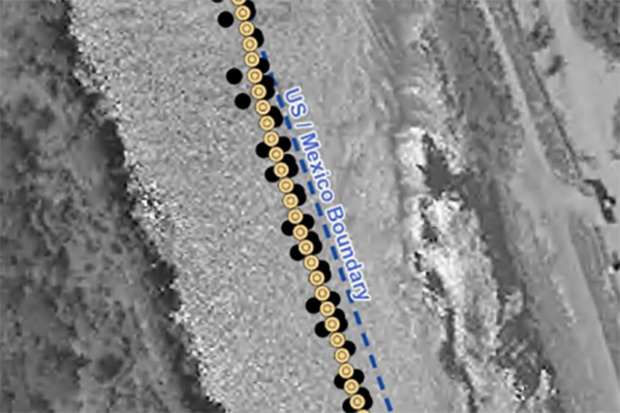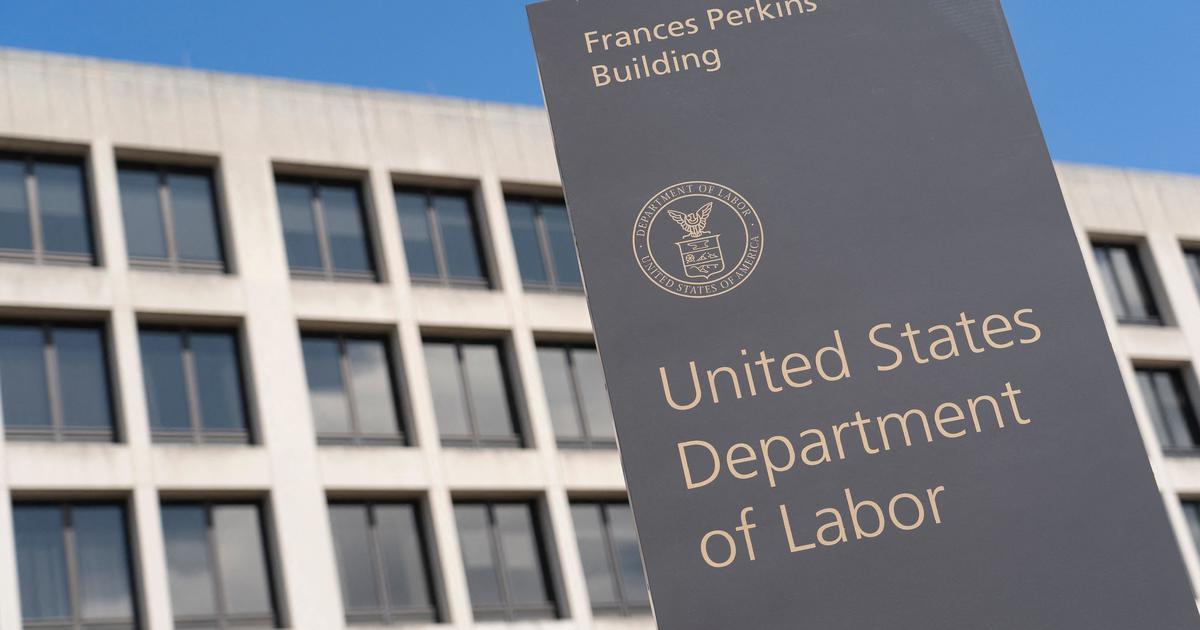Nearly 80% of Texas' floating border barrier is technically in Mexico, survey finds
Nearly 80% of the controversial floating barrier Texas state officials assembled in the middle of the Rio Grande to deter migrant crossings is technically on the Mexican side of the U.S.-Mexico border, according to a federal government survey released on Tuesday.
The revelation was made public in a federal court filing by the Biden administration in its lawsuit against the barrier, which Texas set up in July as part of an initiative directed by Gov. Greg Abbott to repel migrants and repudiate President Biden's border policies.
The river barrier, assembled near the Texas border town of Eagle Pass, has come under national and international scrutiny, including from the Mexican government, which has strongly voiced its objections to the buoys. Advocates, Democratic lawmakers and a Texas state medic have also expressed concerns about the structures diverting migrants to deeper parts of the river where they are more likely to drown.
Earlier this month Mexican officials recovered two bodies from the Rio Grande, including one that was found floating along the barrier, but the circumstances of the deaths are still under investigation. Mexican officials condemned the barrier in announcing the discovery of the bodies. But Steve McCraw, director of the Texas Department of Public Safety, said preliminary information indicated that the first person found dead had "drowned upstream from the marine barrier and floated into the buoys."
Abbott and other Texas officials have insisted the buoys are necessary to stop migrants from entering the U.S. illegally, and the state has refuted claims it violated federal law and international treaties when it set up the floating barriers without permission from the Biden administration or Mexico.
The survey that was filed in the federal district court in Austin on Tuesday was conducted by U.S. and Mexican officials at the International Boundary and Water Commission. The commission is a joint U.S.-Mexico body charged with determining international boundaries between the two countries. In Texas, the international boundary is in the middle of the Rio Grande, in accordance with a 1970 U.S.-Mexico treaty.
The joint U.S.-Mexico topographical survey found that 787 feet —or 79%— of the 995-feet-long buoy line are in Mexico, while the rest, or 208 feet of barrier, are in the U.S. Officials from both Mexico and the U.S. agreed on the findings, according to the court filing on Tuesday.
"A majority of the floating barrier (approximately 787 feet of the buoy chain) is located within the territory of Mexico," the Justice Department said in the court filing.
The survey could add a new legal dimension to the Biden administration lawsuit, which argues that Texas violated a longstanding law governing navigable U.S. waterways when it set up the buoys without federal permission. It has asked the federal district court in Austin to force Texas to remove the buoys and to bar the state from assembling similar barriers in the future.
The Justice Department said U.S. and Mexico officials "are in discussions on how to proceed with respect to the portion of the floating barrier that is located within the territory of Mexico."
Senior U.S. District Court Judge David Alan Ezra is slated to hold a hearing on the Biden administration's lawsuit next week, on Aug. 22.
Tuesday's survey is also likely to intensify Mexico's opposition to the buoys, since it is the federal government's responsibility to set border and foreign policy, not Texas'.
The river buoys assembled by Texas have ignited renewed criticism of the state's border security efforts, known as Operation Lone Star. As part of the operation, Texas has bused thousands of migrants to large Democratic-led cities, directed state troopers to arrest migrants on state trespassing charges and deployed members of the Texas National Guard to repel migrants with razor wire and other means.
Abbott and other Texas officials have said they've taken unilateral actions at the U.S.-Mexico border because the Biden administration has not done enough to reduce illegal crossings by migrants.
Unlawful crossings along the southern border fell to the lowest level in two years in June, a drop the Biden administration attributed to a set of asylum restrictions and programs that allow migrants to enter the U.S. legally. But they have since increased again, despite the extreme heat in the southern U.S., preliminary Border Patrol data show.






